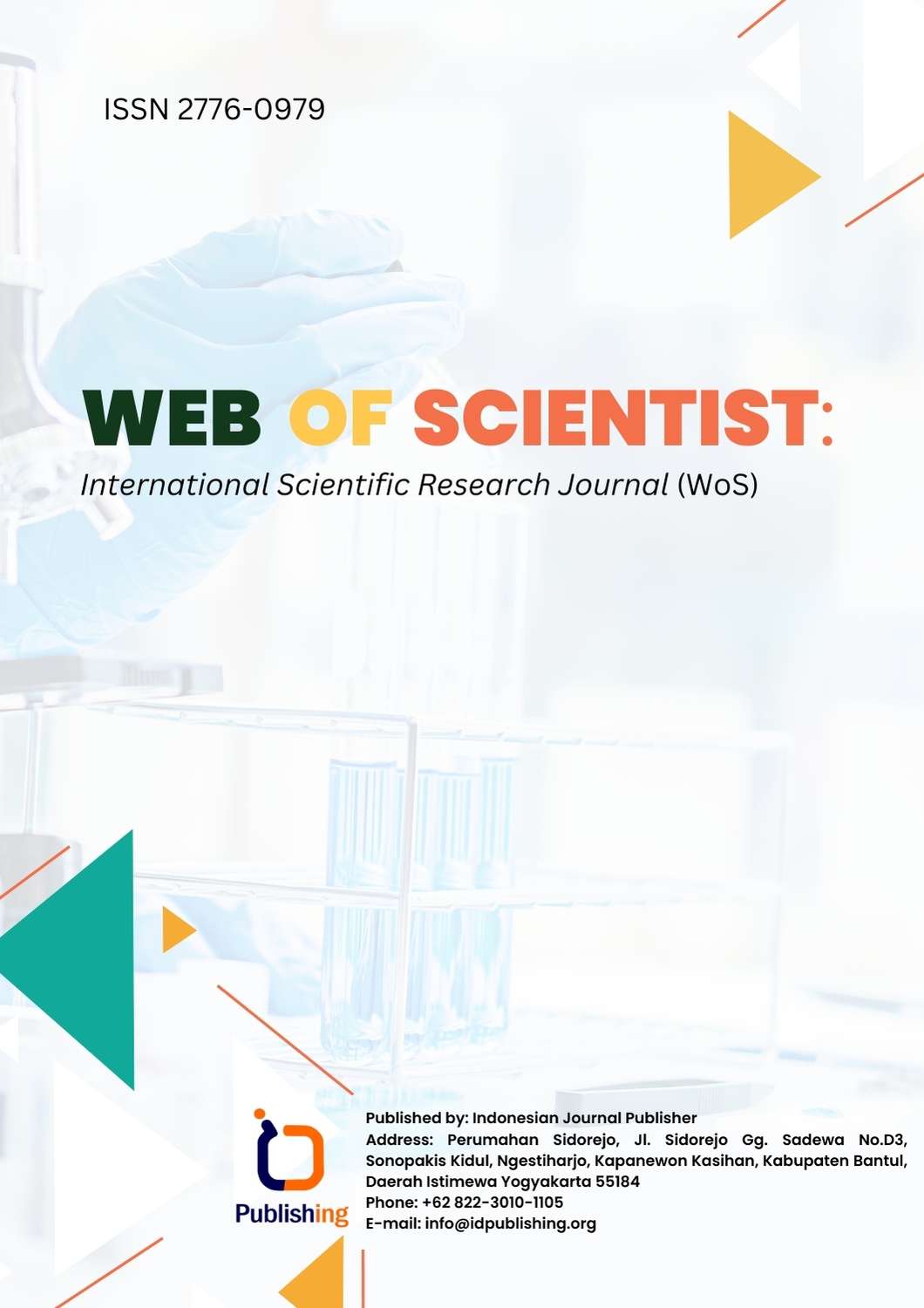The Role and Importance of Self-Awareness and Assessment in A Person's Life
DOI:
https://doi.org/10.47134/webofscientist.v4i1.43Keywords:
Self-Awareness, Self-Assessment, I Concept, Real Assessment, Adequacy, Self-Assessment Processes, Appropriate Assessment and Inconsistent Assessment, Features Of Self-Awareness, Types Of Self-Assessment and Their Specific CharacteristicsAbstract
This study examines the role of self-awareness and self-assessment in shaping an individual’s personality, decision-making, and psychological well-being. The research aims to analyze the process of self-awareness development, its impact on self-evaluation, and how it influences personal growth and professional success. A qualitative methodology is employed, incorporating psychological theories, literature review, and observational studies to explore the stages of self-awareness from early childhood to adulthood. The findings highlight that self-awareness allows individuals to regulate their emotions, develop confidence, and enhance their ability to make rational decisions. The study also categorizes self-assessment into adequate, high, and low levels, demonstrating the consequences of overconfidence or self-doubt in personal and social interactions. Realistic self-assessment fosters balanced emotional health and effective decision-making, whereas extreme self-perception can lead to stress, failure, or lack of motivation. The research concludes that continuous self-reflection and self-regulation are key to personal and professional development. Encouraging realistic self-awareness from an early age can help individuals build resilience and maintain a positive self-concept, ultimately contributing to a well-balanced and successful life.
References
Avezova, B. X. The place and role of self-regulation in the structure of a person’s personality.
Berdikulova, G. A. (2022). Dependence of social knowledge and innovation. American Journal of Research in Humanities and Social Sciences, 7, 89-93.
Bryant, F. B. (2021). Current progress and future directions for theory and research on savoring. Frontiers in Psychology, 12, ISSN 1664-1078, https://doi.org/10.3389/fpsyg.2021.771698
Chen, D. (2020). Consensus parameter: Research methodologies to evaluate neurodevelopmental effects of pubertal suppression in transgender youth. Transgender Health, 5(4), 246-257, ISSN 2380-193X, https://doi.org/10.1089/trgh.2020.0006
D. G'. Muhamedova, N. M. Mullaboeva, & A. I. Rasulov. (2018). General Psychology. Tashkent.
Dunn, D. R. (2010). Intensive immersive research experiences for undergraduates and teachers: Undertaking creativity and innovation, diversity of thinking, and entrepreneurship. ASEE Annual Conference and Exposition, Conference Proceedings, ISSN 2153-5965.
Edwards, D. J. (2024). A functional contextual, observer-centric, quantum mechanical, and neuro-symbolic approach to solving the alignment problem of artificial general intelligence. Frontiers in Computational Neuroscience, 18, ISSN 1662-5188, https://doi.org/10.3389/fncom.2024.1395901
Greene, A. (2014). The role of self-awareness and reflection in social care practice.
Haynes, J. (2015). Preparing pre-service primary school teachers to assess fundamental motor skills: Two skills and two approaches. Physical Education and Sport Pedagogy, 20(4), 397-408, ISSN 1740-8989, https://doi.org/10.1080/17408989.2014.892064
I. M. Sirozhiddinova & O. X. Puchalova. (2021). A textbook entitled Professional Psychology.
Keenan, J. P., Oh, H., & Amati, F. (2011). An overview of self-awareness. The Oxford Handbook of Social Neuroscience, 314.
Kholmurotovna, A. B. (2023). Psychological aspects of self-management in a person. Asian Journal Of Multidimensional Research, 12(12), 81-87.
Kholmurotovna, A. (2025). The specifics of students' self-control. Emergent: Journal of Educational Discoveries and Lifelong Learning (EJEDL), 4(1), 10-10.
Le, T. Van. (2023). Teachers’ perception of the necessity of applying online applications for organizing teaching activities at high school in Vietnam. Journal of Education and e-Learning Research, 10(3), 429-436, ISSN 2518-0169, https://doi.org/10.20448/jeelr.v10i3.4838
Leary, M. R. (2007). The curse of the self: Self-awareness, egotism, and the quality of human life. Oxford University Press.
London, M., Sessa, V. I., & Shelley, L. A. (2023). Developing self-awareness: Learning processes for self-and interpersonal growth. Annual Review of Organizational Psychology and Organizational Behavior, 10(1), 261-288.
McCormack, C. M. (2024). Supporting sleep health and chronic care management information for patient self-care. Proceedings of the IISE Annual Conference and Expo 2024.
Muminova, G., & Tashpulatov, B. (2022). Political repressions during the period of collectivization in Uzbekistan (On the example of Kashkadarya region). Oriental Renaissance: Innovative, Educational, Natural and Social Sciences, 2(1), 725-729.
Musinova, N. M., Jumayev, U. S., & Olimov, L. Y. (2023). Level of self-awareness, self-assessment, and personal healing.
Normatova, D. E. (2023). Spirituality and enlightenment, their importance in the development of society. Gospodarka i Innowacje, 41, 553-562.
Oztemel, E. (2020). Literature review of Industry 4.0 and related technologies. Journal of Intelligent Manufacturing, 31(1), 127-182, ISSN 0956-5515, https://doi.org/10.1007/s10845-018-1433-8
Selamat, M. H. (2014). Chemobrain experienced by breast cancer survivors: A meta-ethnography study investigating research and care implications. PLoS ONE, 9(9), ISSN 1932-6203, https://doi.org/10.1371/journal.pone.0108002
Tashpulatov, B. (2021). History of training of higher medical staff in Khorezm region. НАУКА И ТЕХНИКА 2021. АКТУАЛЬНЫЕ ИССЛЕДОВАНИЯ, 10-13.
Zarbo, C. (2018). Perfectionistic traits and importance given to parenthood are associated with infertility-related quality of life in a sample of infertile women with and without endometriosis. Sexual and Reproductive Healthcare, 17, 86-90, ISSN 1877-5756, https://doi.org/10.1016/j.srhc.2018.07.008
Авезова, Б. Х. (2024). Психологические аспекты семейной жизни и семейных отношений. Artium Magister, 24(1), 11-15.






